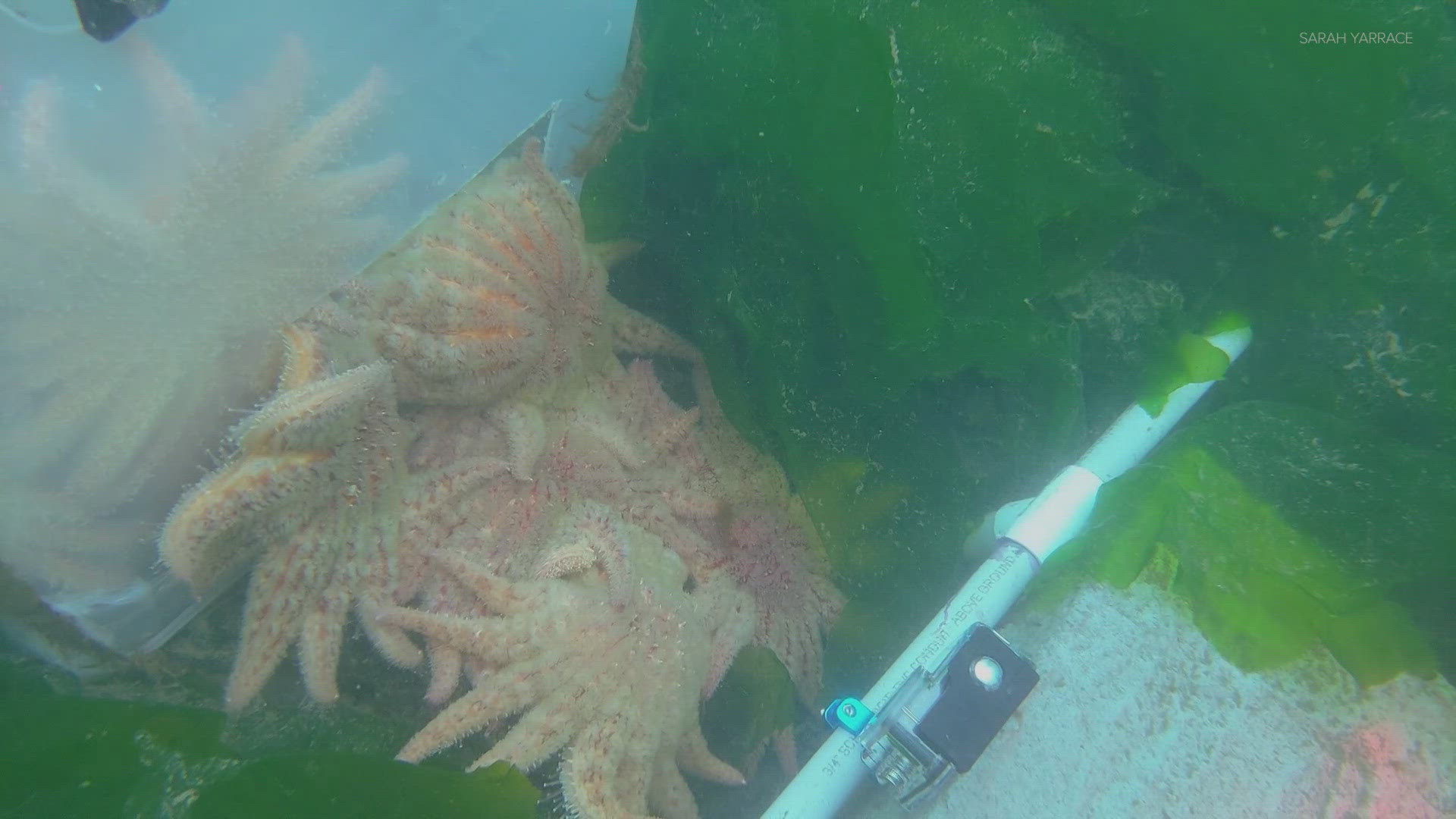FRIDAY HARBOR, Wash. —
Major steps are being taken to save an ocean critter critical to the ecosystem: the sunflower sea star.
After disease nearly wiped out the population across the west coast about 10 years ago, University of Washington researchers were tasked with saving the species. Using some of the few existing sea stars in the Friday Harbor region, scientists, led by researcher Jason Hodin, bred and nurtured multiple generations of lab-grown sea stars.
The breeding process started in 2019 and finally, in August, the years of waiting came to fruition and the first group of lab-grown sea stars was released into the wild for the first time ever.
“We’ve been talking about this for five years now, it’s pretty exciting,” said Hodin on the day of the release.
The team of scientists put together a thought-out plan for the process. Scuba divers put a marker pole on the sea floor in front of their lab, then carried a box of ten lab-grown sea stars down to that marker and released them from that point.
Their goal is to then monitor the sea stars’ movement each day for at least a few weeks, taking note of how far they move and how their health is.
“No one’s ever done this before with this age of star or with any captive-bred star before, so we have no idea what to expect,” said Hodin.
If the sea stars are successful in the wild, the goal is to copy this system and grow more sea stars in labs on a larger scale, then release them onto beaches across the West Coast.
As soon as the door to the sea stars box was opened underwater, most of them quickly emerged and began exploring the sea floor for the first time.
Hodin said watching the divers swim away with the sea stars was an incredible moment that was a long time coming.
“It’s a million questions that we’ve had about what these stars will do that we’ve been thinking about for years and will finally get some answers,” he said, adding that this is big step toward a greater goal.
The team had previously submerged a group of sea stars underwater in a cage, but this was the first time they were set free on their own.
“We’re not going to repopulate the entire ocean with these ten sea stars or even with the hundreds that we have in the lab, but we can show how it’s done,” he said.

